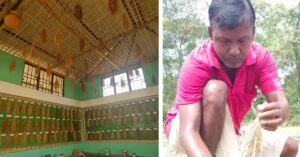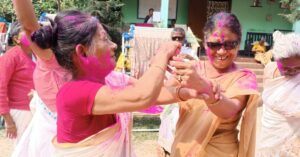Assam Floods: Unique Bamboo Houses Help a Village Survive 7 Floods in 3 Years
At a time when over 48 lakh people across 30 districts have been affected by the #AssamFloods, the region’s traditional wisdom holds out hope.

Almost every monsoon, Assam is overwhelmed by the angry waves of the Brahmaputra, which sweep away everything they encounter — from human settlements to paddy fields. Even as you read this, countless families across the state are suffering the devastation of the floods that have ransacked 27 districts affecting nearly 40 lakh people.
60-year-0ld Nikhari Pathori of Golaghat district is no stranger to the situation, and has lost her home and all her belongings in previous monsoon floods. But, this year is different for her.
“Almost every year, the joy we feel at the arrival of the monsoons, is mixed with the worry of losing it all. Over time, as a community we learnt to cope with floods but with the rising frequency, it had become increasingly hard. From cooking to even using the toilet was an issue and so, many would venture out into the deep to find private spots. But, for the past three years, things have been different for the people in our village after our new houses were built that are strong enough to withstand the floods,” says Nikhari, a member of the Goromari community in Nikori village, located at the convergence of two rivers, Dhansiri and Gelabill.
Her village and almost the entire of Golaghat district was one of the worst affected regions in Assam, back in 2017. The devastation had further worsened due to the soil erosion of 2016, that wrecked more than 40 structures including residential shelters as well as schools.

Sunil Loying, another member of the community, recalls how the inaccessibility of toilets in the flood-ridden zone, had forced people to defecate in the open, in the same flood waters that were also being used for daily purposes including drinking, breeding various water-borne diseases like malaria, dengue and cholera.
“The state of health, education and livelihood was in a disarray. Our villages were literally water-locked and we couldn’t even reach the nearest health centre,” says Sunil, who soon found a solution to their problems, with the help of SEEDS (Sustainable Environment and Ecological Development Society), a non-profit organization which drives disaster-management and rehabilitation efforts through their expertise in architectural design.
Sunil was one of the first members to join in SEEDS’ efforts to provide community-driven housing support in 2017, when they began the flood-response programme of building 81 bamboo houses in association with the North-East Affected Area Development Society (NEADS). Consequently, Nikhari became one of the many whose houses were remade with a unique housing design which combines modern architectural innovation with a traditional vernacular typology of bamboo stilt houses.
Using the Native Wisdom of Assam for Survival
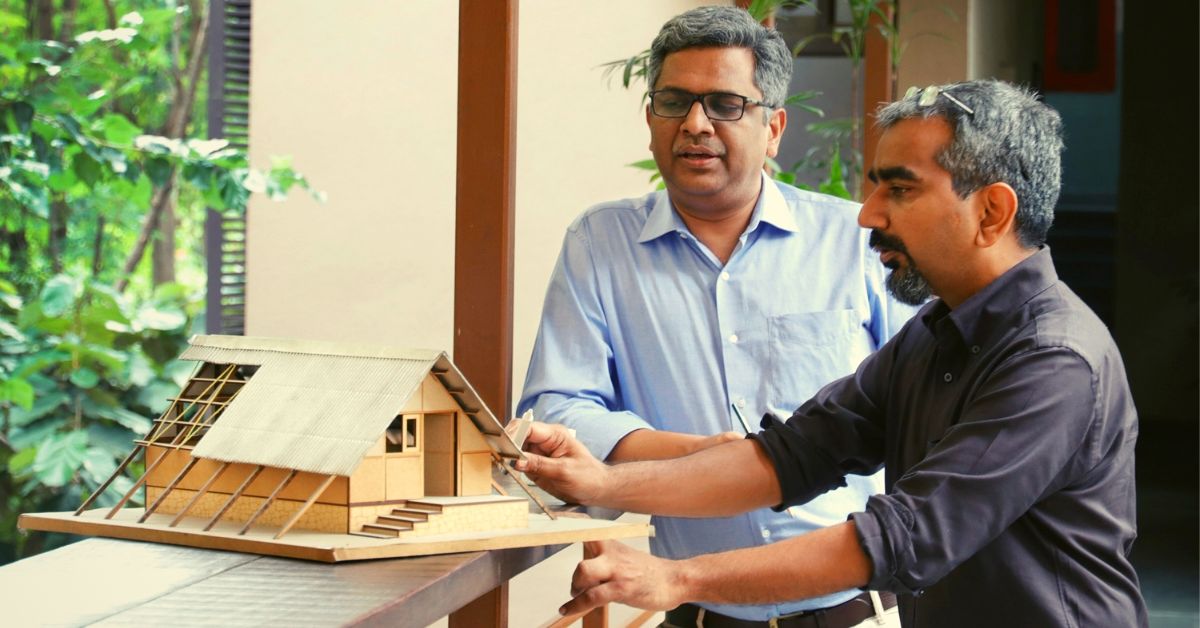
Golaghat is famous for its high-quality bamboo and the traditional knowledge of using it for various purposes, including housing shelters. The architects and engineers along with the help of the local community, used this native wisdom and locally available bhaluka and jati bamboo varieties to build 81 bamboo stilt houses that were strong and elevated enough to withstand the floods.
“Currently, Assam is flooded almost thrice a year and so our approach had to be more internal than external. It was not just about building homes, but also helping people rebuild the community together. The design had to have an inherent resilience to it, so that they would not have to dislocate whenever the next flood took place, and the work needed to be executed as a community. So instead of introducing something completely new, we integrated their own traditional methods and customs, as a socio-technical handholding process,” says Dr Manu Gupta, who along with Dr Anshu Sharma co-founded SEEDS in 1994.
In other words, while the design of the house borrowed aspects of a traditional bamboo stilt house, the building process was based on their local Hariya system, where villagers volunteered to help build a neighbour’s house in exchange for meals. Sunil was one the many who lent a hand and his skill of bamboo craftsmanship to help build these houses.
This level of community participation in the rehabilitation and re-building efforts is intrinsic of SEEDS’ philosophy.

“SEEDS was born with the ultimate goal of protecting lives and livelihoods of people exposed to disasters. But, it was after the 2001 Gujarat earthquake when we realised that an external body alone cannot help rebuild a community that has lost almost everything in the face of devastation. The change had to come from within, because no matter what, people are naturally attached to their cultural identities and surroundings and the solutions should reflect that. The reason behind exploring Assam’s traditional use of bamboo as a solution to the problems of this community comes from that idea,” explains Dr Manu, adding that the organisation has been involved in post-disaster housing all across the country, from Gujarat, Assam to Kashmir.
And owing to this philosophy, the process of building each of the houses is owner-driven, with them being involved from the design to the execution stage. From cutting and splitting the bamboo, making the thatch walls, to deciding the customized facade of the house and adding personal aesthetics, the owners have been involved in every step of the process.
Hybrid Housing Design: Bamboo Stilt houses
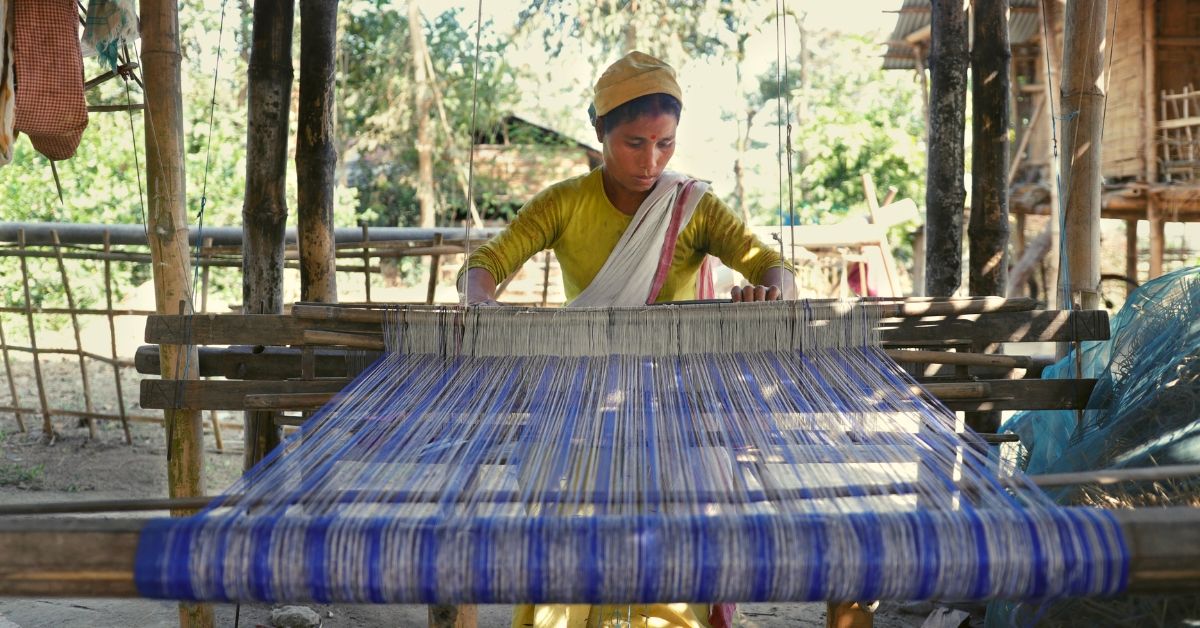
Built on an area of 23 sqm, the core houses are supported by 5-ft tall bamboo stilts that can cope with the rising water level during the floods. Ideal for a family of 5 people, the layout of each house is simple but encouraging of multi-purpose use.
The main house comes with a large hall that can be partitioned into rooms based on the requirement, and a semi-open verandah for various activities like food preparation, socialization and basket-weaving. The elevation provided by the stilts on the other hand, in addition to protecting the house from over-flooding, also allows a space for other livelihood purposes like rearing livestock, weaving, recreation, storing boats etc.
What are the technical specifications that make these houses more durable than the ones made of conventional bamboo?
“Our engineers and architects researched and worked to enhance the durability of the conventional construction by adding various technical improvements, like waterproofing the stilt bamboo columns with rubberised coating, that also prevents the bamboo from rotting over time, due to the extensive exposure to water. Also, the construction is further strengthened with deeper bamboo footings that are encased inside the ground with concrete. Also for roofing and walls, we have made use of cross bracing along with indigenous tying technique using rattan and bamboo dowels, that makes the structure more resilient and resistant to lateral forces both during the floods as well as earthquakes.”
The architect adds that all the primary materials used, especially bamboo and rattan (a climbing palm vine with a solid core that wraps itself around other trees), were sourced from within a 6-km radius, keeping it a sustainable endeavour. Each house cost Rs 75,000 to build.
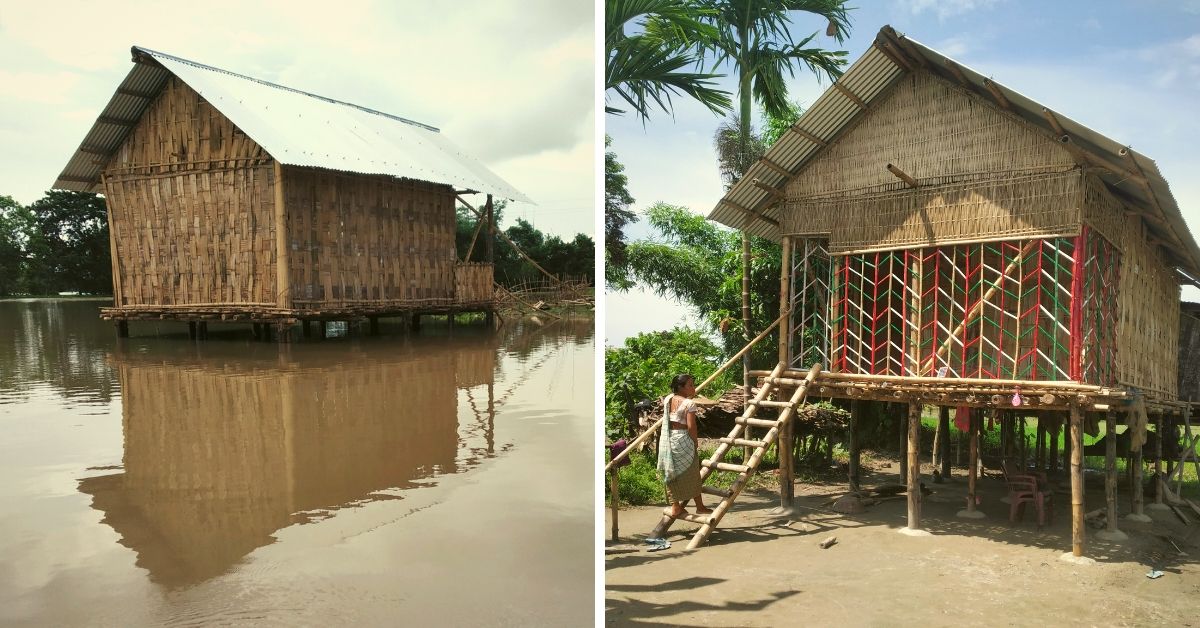
“Some 20 years ago, during a backpacking trip in Assam, I had encountered a farmer who had made a stilt based homestead but with adjustable height. Replicating this on a large structure like ours is a challenge but we are working on it and hopefully will find a way in the near future. With the rising severity of the issue due to climate change and haphazard construction activities in several parts of Assam, especially Guwahati which is exposing the entire state to rampant landslides, solution-based design like ours need to be constantly evolving,” shares Dr Manu, whose organisation also built 3 schools in the area in 2018 and is working on constructing two flood resilient evacuation centres in Golaghat.
Meanwhile, as people like Nikhari and Sunil reap the benefits of SEEDS’ sustainable development solutions, Dr Manu and Dr Anshu draw satisfaction from the impact it has created.
“We are only the facilitators who work to empower the community and the measure of impact for us is when the community doesn’t need our help the second time and is able to address their issues, through the framework we created with the help of the local organisations. Since 2017, the houses in Nikori have already survived over seven floods and that is the biggest takeaway for us,” concludes Mr Gupta.
Photographs courtesy: SEEDS
(Edited by Gayatri Mishra)
This story made me
- 97
- 121
- 89
- 167
Tell Us More
We bring stories straight from the heart of India, to inspire millions and create a wave of impact. Our positive movement is growing bigger everyday, and we would love for you to join it.
Please contribute whatever you can, every little penny helps our team in bringing you more stories that support dreams and spread hope.






